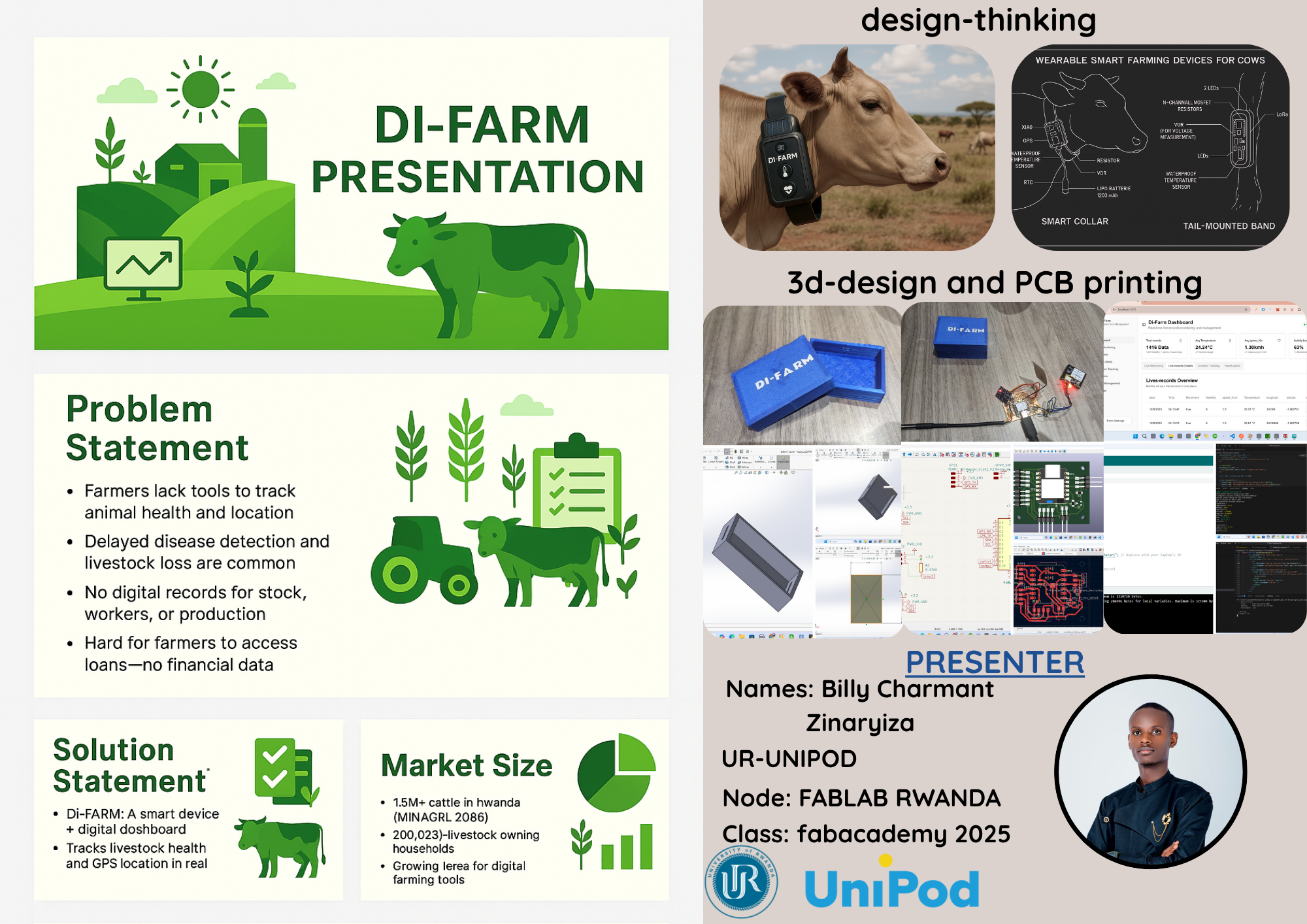Invention, Intellectual Property and Income
This week was focused on the business side of invention — intellectual property (IP), licensing, and how I can legally protect and even share or commercialize the work I’ve done. It was a bit overwhelming at first, especially after spending so much time on technical development, but I quickly saw how important this is for taking DI-FARM beyond just a prototype.
What I Learned About IP
I explored the different types of intellectual property rights and how they apply to projects like mine:
- Patents: Can protect inventions, but require full public disclosure and are expensive.
- Copyright: Automatically protects my code, designs, and documentation.
- Trademarks: Useful for protecting the DI-FARM name and any future branding.
- Trade Secrets: Only useful if I want to keep parts of the design secret, which isn’t my goal.
My Project: DI-FARM
DI-FARM is a smart monitoring system for livestock, designed to track the health and location of cows using low-cost IoT wearable devices. My goal is to support small farmers by giving them real-time data that helps improve animal care, reduce losses, and make smarter decisions.
Who DI-FARM Is For
The main users of DI-FARM would be smallholder livestock farmers, cooperatives, agricultural schools, and smart farming initiatives. These groups often face challenges related to livestock theft, health issues, and poor data, and DI-FARM is designed to solve that with accessible technology.
How I Plan to Share It
I want to make DI-FARM open and accessible, so I’ve chosen an open-source approach. I’ll be:
- Documenting the project thoroughly on my FabAcademy page
- Demonstrating it at local farms and innovation hubs
- Presenting at events and exhibitions to get feedback
- Collaborating with agricultural organizations and makerspaces
My Open Source License
I chose to license DI-FARM under the Creative Commons Attribution-ShareAlike 4.0 International License. This license:
- ✔ Allows others to use, modify, and even sell the project
- ✔ Requires credit to be given to me
- ✔ Requires that any improvements be shared under the same license
This aligns with my goal of open, collaborative development, and ensures I retain credit while encouraging community contributions.
Steps I Followed to Generate My License
starting by Visitingt Creative Commons Website
I started by going to the official Creative Commons website: creativecommons.org.
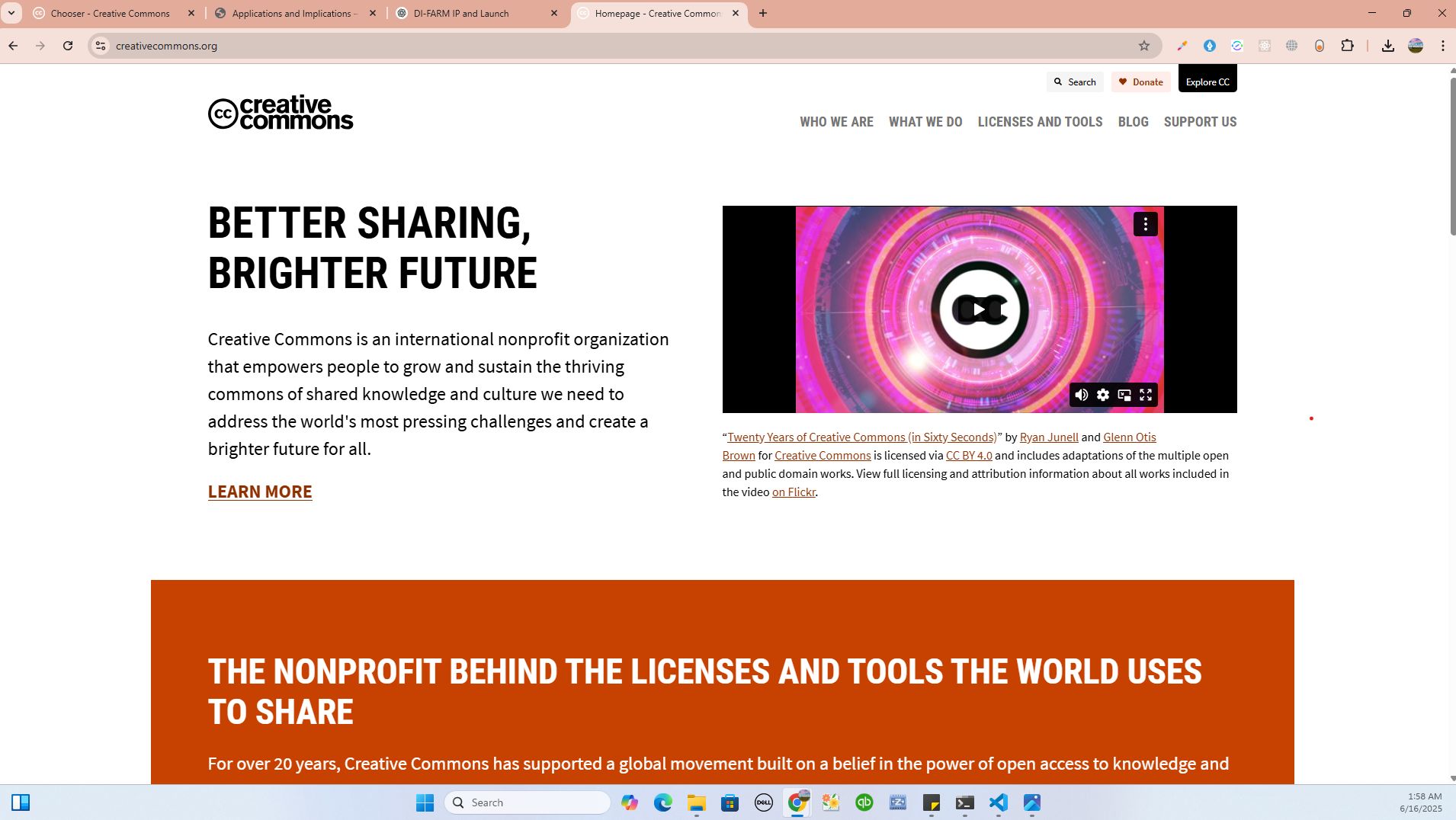
Now I Navigated to the License Chooser Tool
From the homepage, I clicked on the option that says "license and tools" which rediirected me to the page that helped me to begin creating a license.
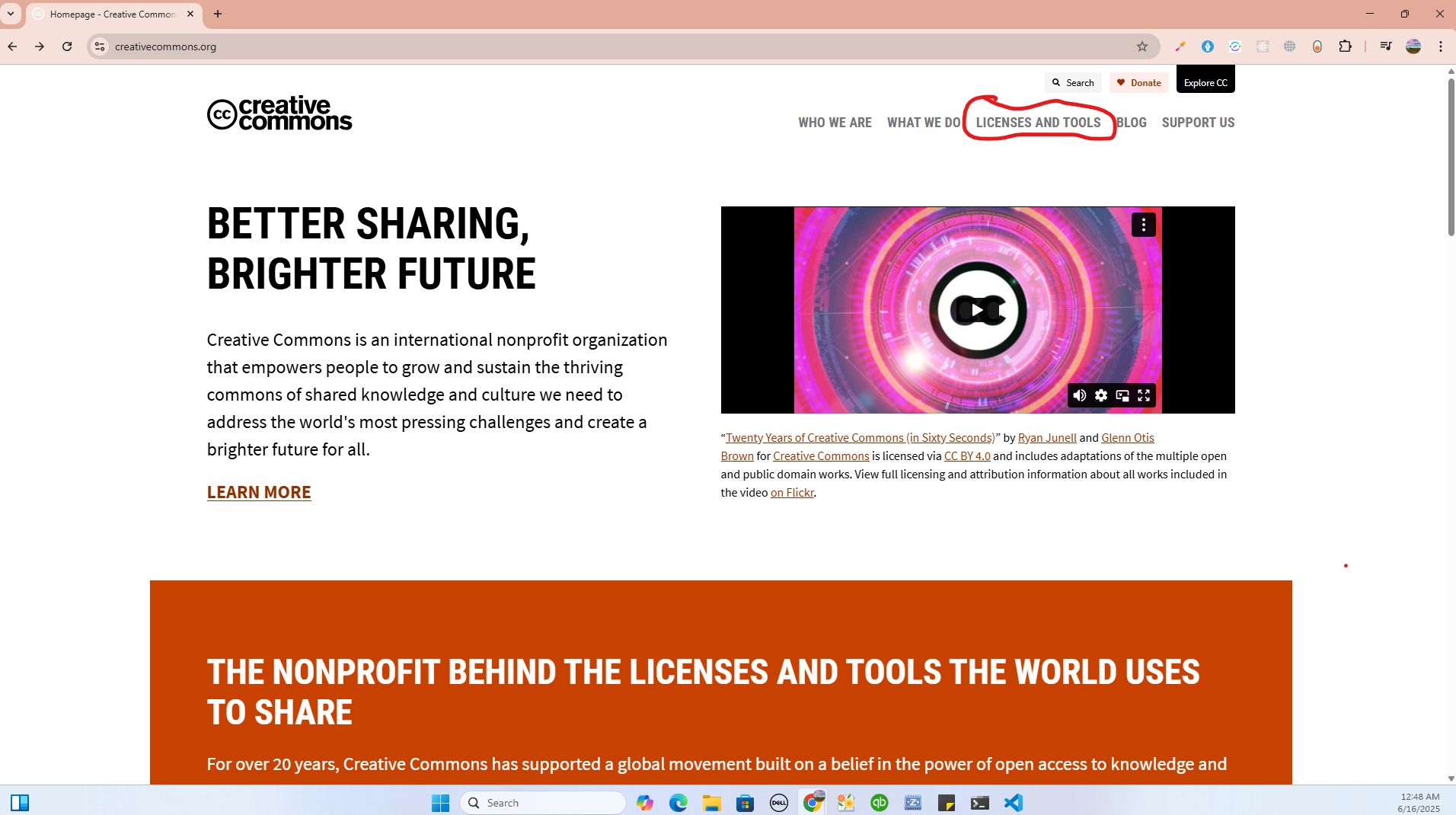
after, I clicked scrolled down navigating through all details and info about what Creative commons do and I found choose license step and the get started with the chooser which redirected me to Choose a license for your work
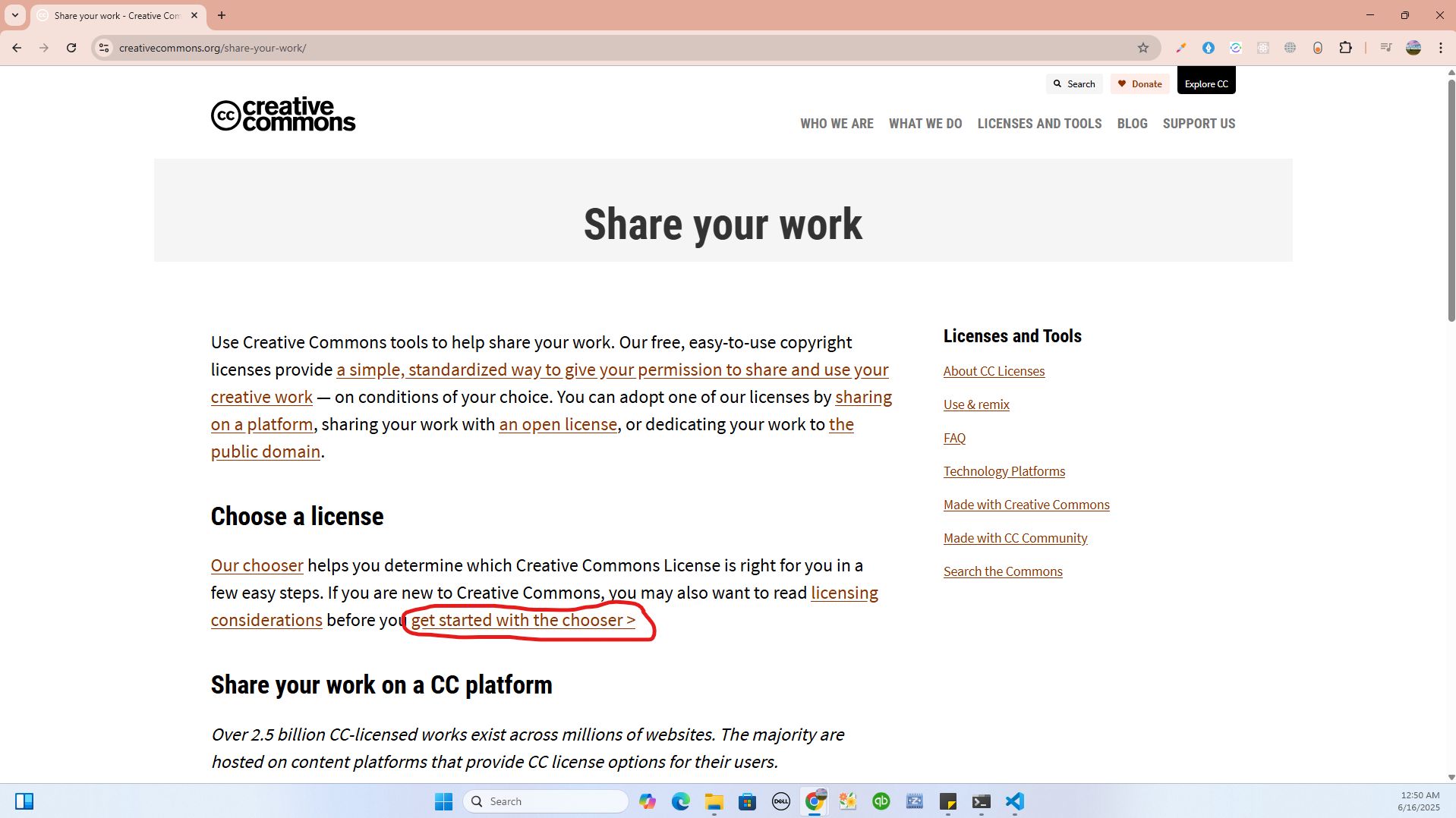
how I Opened the License Chooser
I was redirected to the license chooser tool for my work. This is where I began answering questions about how I want my work to be used.
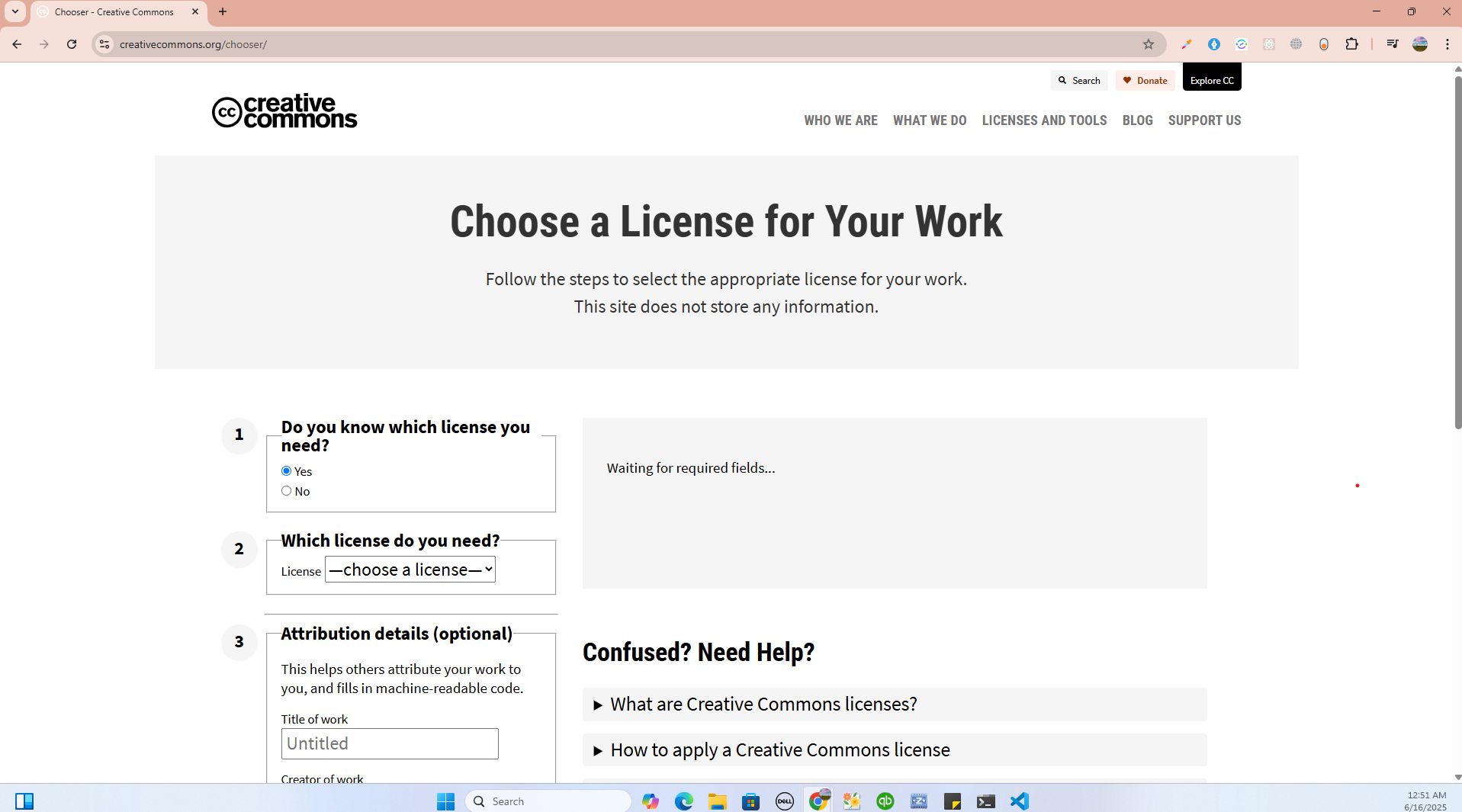
Answering the Questions in the portal
I answered the questions about whether to allow commercial use and if derivative works must be shared under the same license.
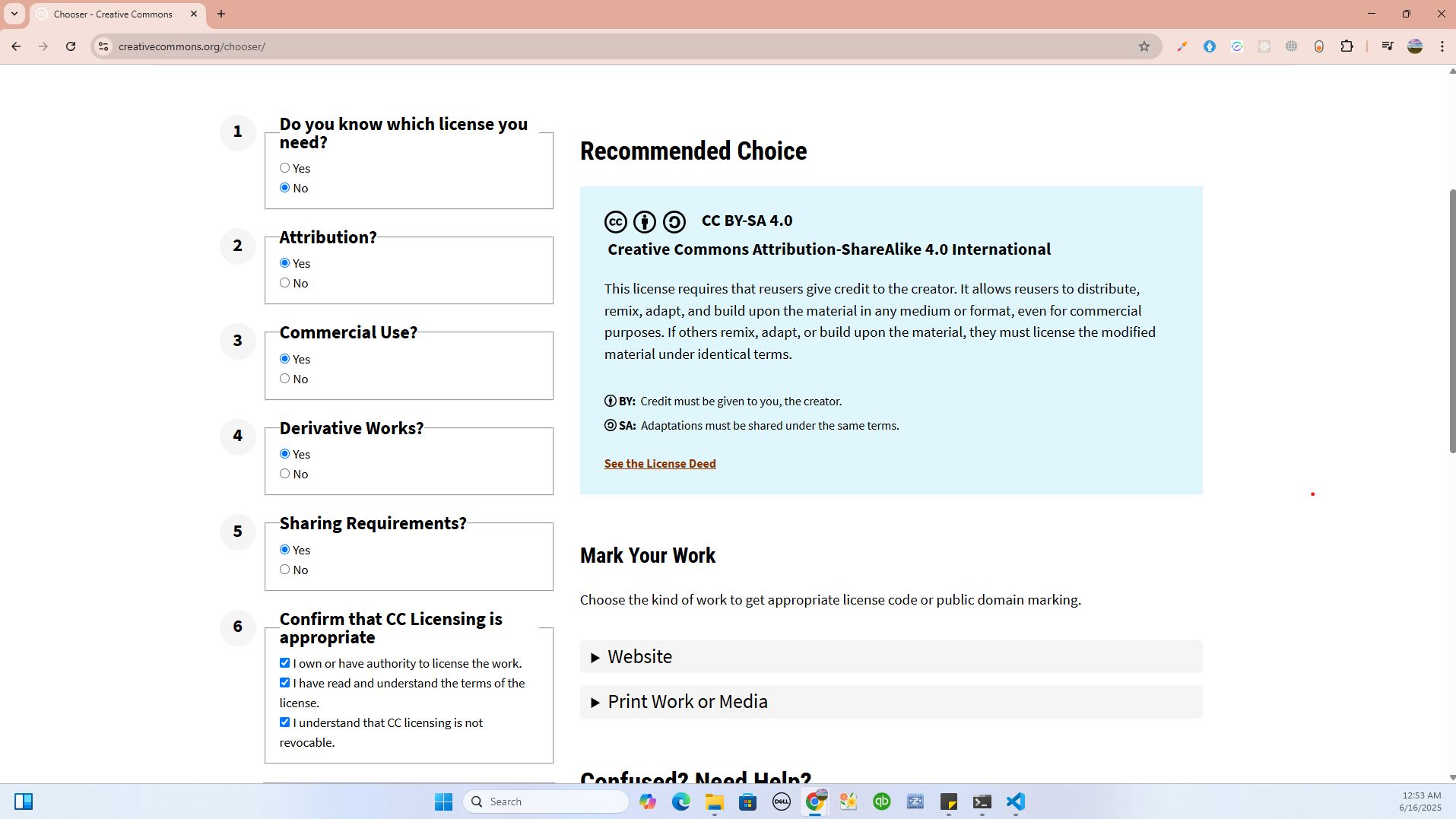
how License Summary Was Generated
Based on my answers, the site generated a license summary with Creative Commons Attribution-ShareAlike 4.0 International (CC BY-SA 4.0).
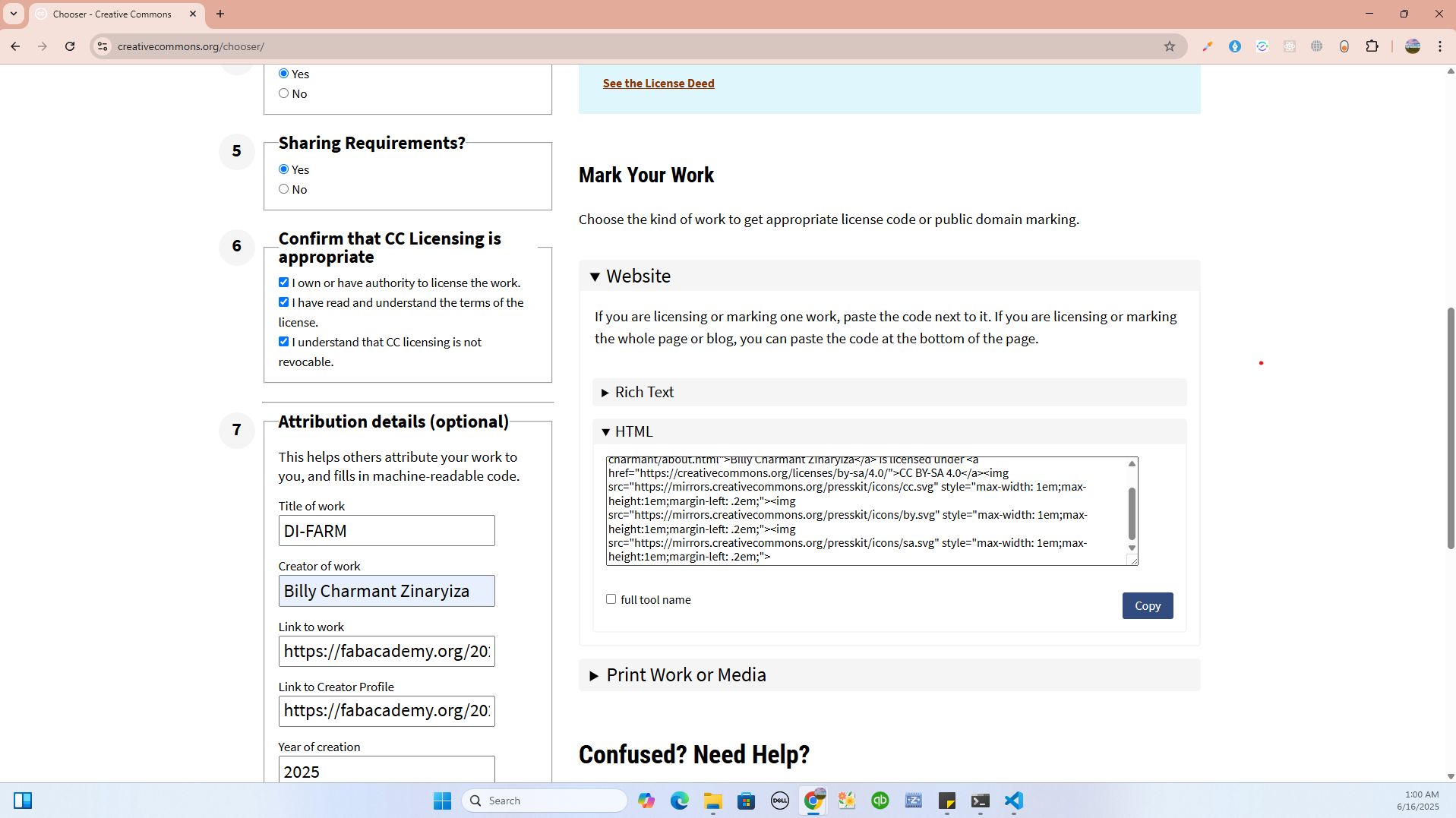
how I Reviewed the License Format
I reviewed how the license and attribution details would appear when embedded in my documentation or website.
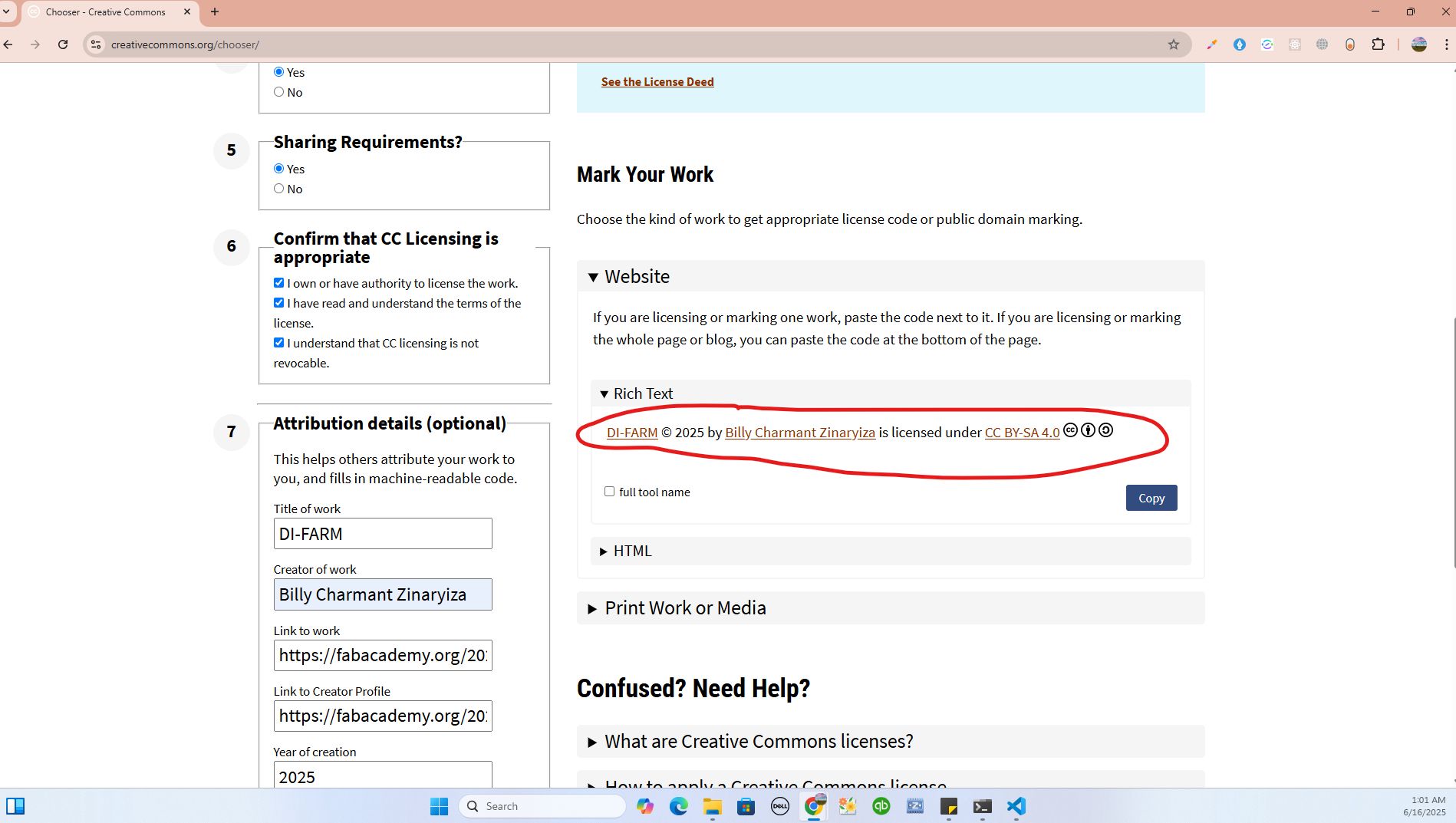
With this license in place, DI-FARM remains free and open for improvement, while making sure contributions stay under the same license and credit is maintained.
Can I Make Money From DI-FARM?
Yes, even with open-source licensing, there are sustainable ways to generate income from DI-FARM, including:
- Selling pre-assembled DI-FARM kits
- Offering setup and installation services
- Running training programs and workshops for farmers
- Developing customized versions for large-scale farms
- Providing technical support and updates
Real-World Testing
I plan to test DI-FARM in real farm environments. This will help me identify what works, what needs improvement, and how the system performs under daily use. I want feedback from actual users so I can refine the design and features based on real needs.
Future Plans for DI-FARM
In the next steps, I want to enhance DI-FARM with:
- Wi-Fi and LoRa monitoring support
- Web dashboards for data visualization and presentation
- Improved GPS tracking and geofencing for cow in the farm
- Historical data analysis for health trends and financila reports
My Takeaway
This week reminded me that building a good product is only one part of innovation while protecting and sharing it responsibly is just as important. Understanding IP helped me make informed decisions that match my goal: to support farmers by making technology that truly helps them.
With DI-FARM, my aim is to help farmers securely collect and manage important data from their livestock. By combining a physical device with a digital dashboard, I want to enable them to make better decisions based on real-time monitoring and smart predictions. This can improve animal welfare, prevent losses, and increase productivity.
DI-FARM is meant to grow through feedback and real-world use, and I’m excited to see how it evolves over time.
Slide of my Presentation
